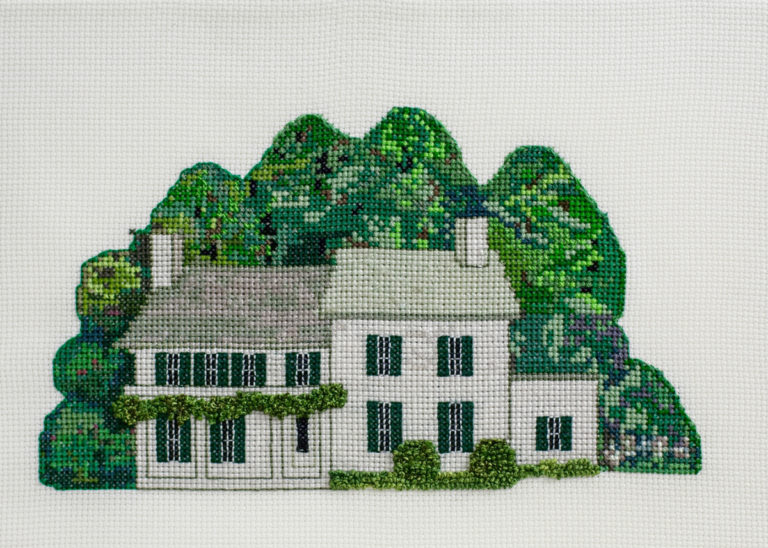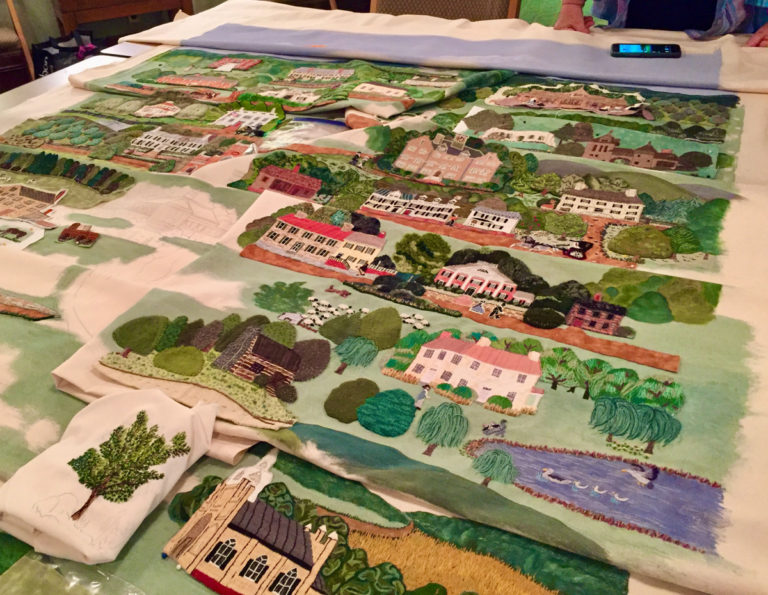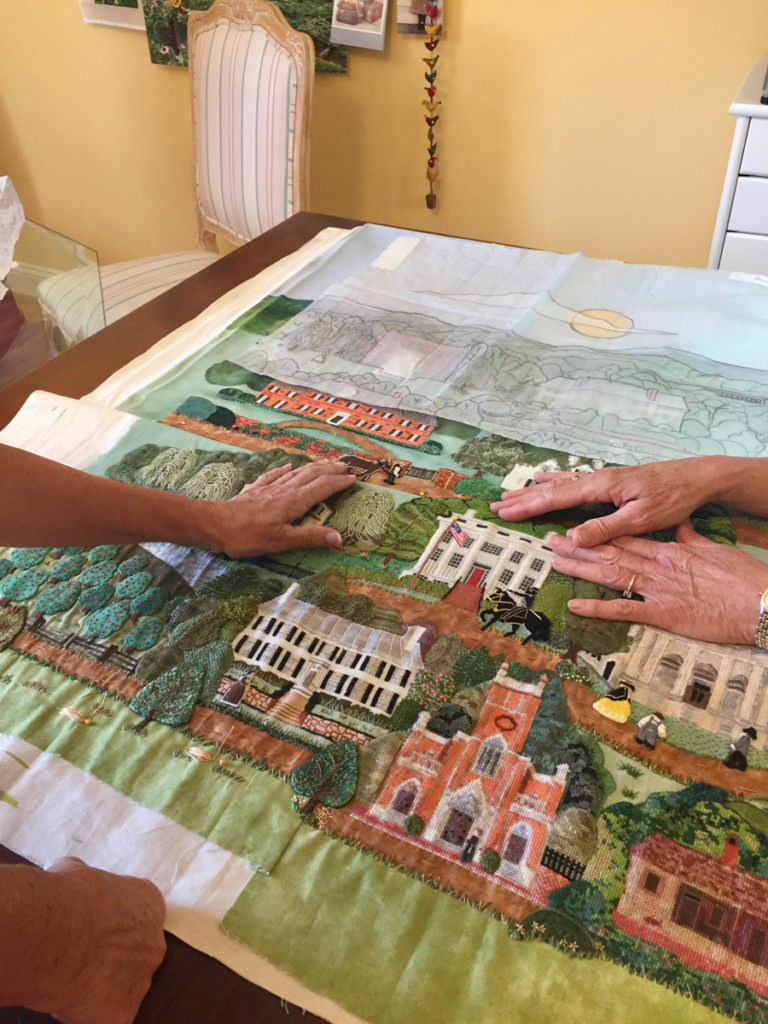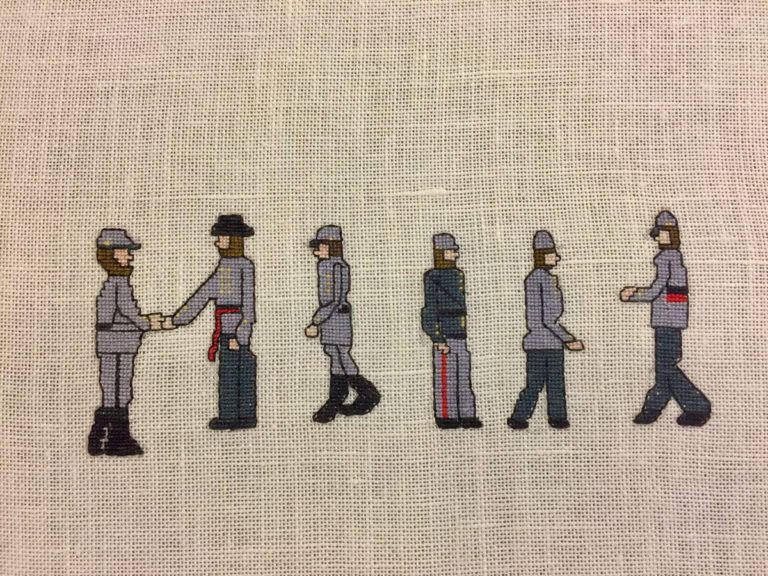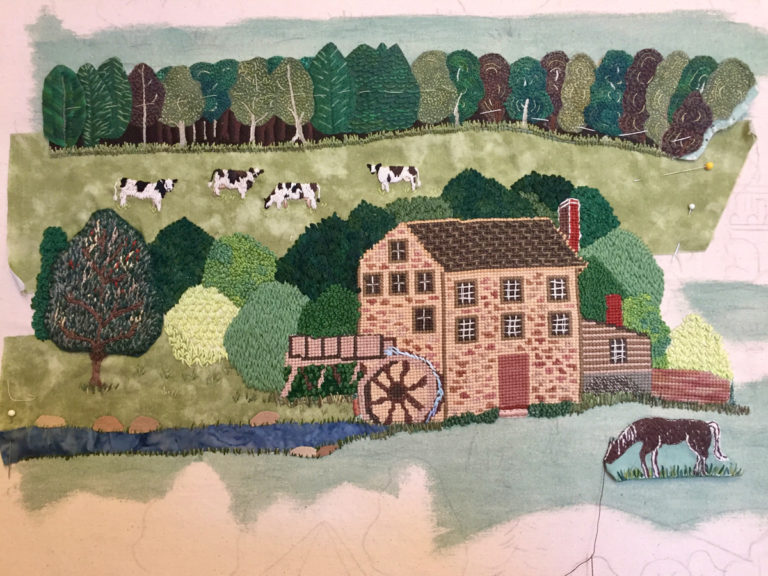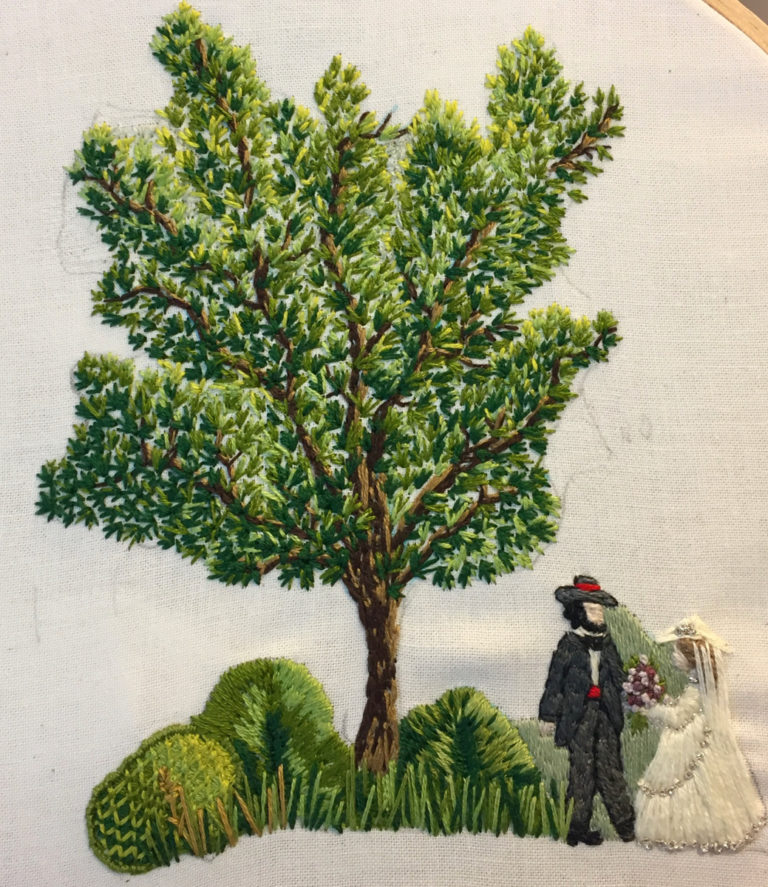Techniques, Materials and Stitches
LINDA SUTER:
The selection of techniques, materials, and stitches was an amazing journey in and of itself. When we started, we thought it would be simple – we could set the color palette, give out tracings and fabric to stitchers, and come up with a Tapestry! Not so simple as there were many complexities and decisions along the way.
Once we realized that artistic interpretation would be more important than having a set color palette and mandatory stitching techniques – we saw some amazing artistic and creative stitching.
The Tapestry base is a duck fabric, which has been painted with a soft landscape background of different greens with blue for the sky. The houses and buildings were created on slips that were appliquéd to the Tapestry duck base. You can find cross-stitching, needlepoint, silk ribbon embroidery, couching, and appliqué.
The road, Valley Pike, is a Moda fabric (Moda Marbles 9824 – Tea Tan). Other fabrics were also used to create interest – such as microfiber for the hills. The Tapestry’s people are stitched on slips and appliquéd to the Tapestry base duck. The detailed stitching in the people is amazing given their small size. The awesome trees on the Tapestry reflect the artistry and expertise of so many stitchers using various techniques such as French knots and straight stitch and materials such as chenille and wool felt. Pay attention to the details of the horses, the Civil War encampment, the stagecoach, the sheep, the ducks, the cows, the apple orchards, the flowers and grasses, and a cute little dog – and you will see the amazing talents of the Tapestry stitchers.
LUCY EDMISON:
A problem arose because of the sheer size of the tapestry. Although most of the major stitching would be done on the slips and then applied to the background, much stitching needed to be done on the background itself. Grasses, flowers, weeds, road all had to be stitched directly onto the duck. We decided that in order to make both the application of slips and stitching the background easier, we would divide the background into “neighborhoods.” Nine such areas (plus the sky) were laid out and more duck was painted (thank you, Irina) with the individual neighborhoods. Enough margins were left on the newly painted duck to allow for the pieces to be stitched back together when the sections were done.
The reassembly of the neighborhoods was a major project in itself. Not only were the seams irregular, they had to be hidden. The crew of stitchers that managed this are amazing.
The display frame was built by Pam Pampe and her husband Robert Pampe, and donated by them to the tapestry project. Pam also showed us how the tapestry was to be applied to the background. The tapestry was centered on the board and pinned there. After much twitching and rearranging we began the application.

